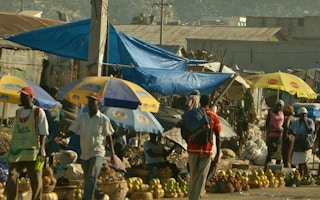It’s the first major summit in 20 years to tackle issues faced by the world’s fast-growing cities - rising inequality, expanding slums and unsustainable infrastructure - but can the U.N.’s cities summit this week deliver concrete results?
Three analysts who advised U.N. Habitat III on creating a “New Urban Agenda” for cities - the plan and recommendations that will come out of the Oct. 17-20 summit - and a U.N. official involved in organising the event in Quito, Ecuador, aren’t so sure.
The stakes are high: the number of people living in cities is expected to rise to 66 per cent of the world’s population by 2050, up from 54 per cent today, according to U.N. figures.
That means an extra 2.5 billion people moving into cities, many of them in Africa and Asia, creating an enormous strain on land and infrastructure and with the potential to leave billions of people living in squalor if urbanisation isn’t well managed.
The latest draft of the summit agenda, which world leaders are set to endorse on Oct. 20, aims to address problems facing fast-growing cities: unaffordable housing, a lack of property rights for slum-dwellers, jobs and space for new arrivals.
But with 175 pledges lacking specific goals or timelines to support aspirations such as “people-centred development” and “equally shared opportunities”, analysts say it is unlikely the summit will deliver concrete improvements on the ground.
“
It doesn’t have much bite. It talks a lot about commitments but has no dates, places or numbers.
Michael Cohen, former World Bank urban affairs specialist
“It’s easy for governments to sign something that is not enforceable,” said Michael Cohen, a former World Bank urban affairs specialist, who has advised U.N. Habitat.
“It doesn’t have much bite. It talks a lot about commitments but has no dates, places or numbers,” he told the Thomson Reuters Foundation.
While acknowledging that conference commitments will be non-binding, U.N. Habitat official Roi Chiti said the meeting would lead to improvements for the world’s urban poor.
“We are going to find resources for concrete actions and a new approach to urbanisation,” Chiti told the Thomson Reuters Foundation.
An effective UN?
While critics frequently accuse the United Nations of talking a lot without accomplishing much, some global conferences have produced tangible results.
In 2000, governments promised to halve the number of people living in extreme poverty as part of the Millennium Development Goals (MDGs). They largely succeeded in meeting the eight measurable objectives.
The number of people living on less than $1.25 per day dropped to 836 million in 2015 from 1.9 billion in 1990.
Goals on getting children into primary school, reducing hunger and improving access to water were either met or narrowly missed. UN officials said the MDGs were the “most successful anti-poverty programme in history”.
In December, ministers from 196 countries meeting at climate talks in Paris agreed to curb increases in global temperatures in a deal regarded as a crucial diplomatic victory in international efforts to tackle global warming.
In contrast, the Quito conference lacks a clear set of objectives or a timeline for completing them, said Michele Acuto, professor of urban theory at University College London, who has conducted research for U.N. Habitat.
Specific goals for improving sanitation or providing housing rights to new migrants are crucial for making the world’s cities livable, Acuto said.
“Unfortunately, we are moving further away from (measurable goals) rather than closer,” Acuto told the Thomson Reuters Foundation.
The lack of clear objectives is partially due to the nature of a summit on urban affairs, said a senior U.N. official involved in behind the scenes diplomacy to bring government representatives to agree on a draft communique.
City governments can’t set national policy, so agreeing on enforceable goals requires different levels of government within each U.N. member state to sign on, creating political headaches.
“Clearly, urbanisation is not well managed in some regions, but it’s difficult to make it (the New Urban Agenda) binding,” the official told the Thomson Reuters Foundation on condition of anonymity in order to speak freely about the summit.
“The recommendations can’t be easily adopted in each of the countries.”
Priorities
While Habitat III lacks a clear plan, aid agencies and governments from wealthy countries are expected to pour money into urban development in poor countries following the summit, said Philipp Aerni, a former U.N. official.
But it may not be channeled to where it is most needed. Aid money should go to essential infrastructure for growing shanty towns and slums on the periphery of growing cities in the developing world, said Aerni.
Rich-world donors, however, are unlikely to be attracted to these sorts of projects as they don’t resonate with taxpayers back home, said Aerni, now director of the Center for Corporate Responsibility and Sustainability at the University of Zurich.
“The urban agenda protects insiders: those who already have property in cities and want to protect it,” Aerni said.
“It doesn’t offer anything to the new arrivals.”
The last U.N. Habitat conference in 1996 pledged to create “adequate shelter for all” and “sustainable human settlements”.
Those lofty aims, which also lacked a timeline or clear commitments, have not been met as the number of people living in slums has risen by more than 200 million since 1990.
This story was published with permission from Thomson Reuters Foundation, the charitable arm of Thomson Reuters, that covers humanitarian news, women’s rights, trafficking and climate change. Visit news.trust.org










